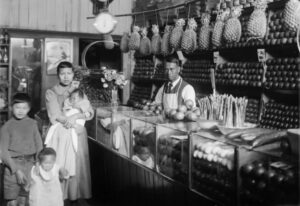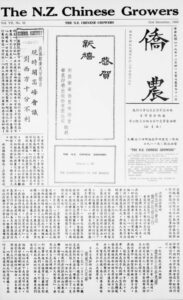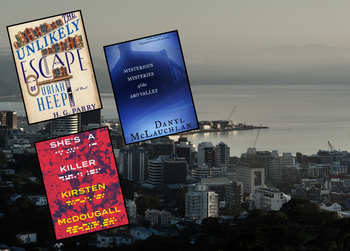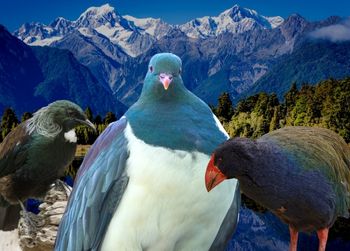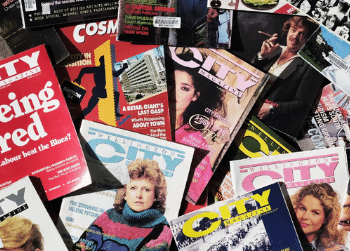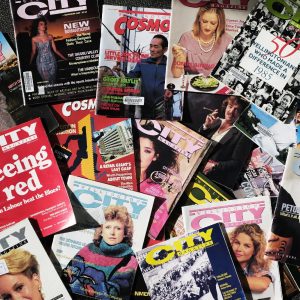Despite the recent cold snap, spring has most definitely sprung in Wellington. The birds are singing their songs of love and building their nests, blossoms are blooming all over the city and keen gardeners are getting out in the sunshine to bring life back after a cold, wet winter.
Aotearoa has a rich natural environment which you can explore it right here in Wellington, as close as your own back yard. We have many books on the flora and fauna of Aotearoa and Wellington, some of which we have chosen to share with you here.
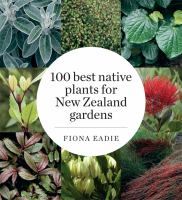 100 best native plants for New Zealand gardens / Eadie, Fiona M“Since its first publication, this book has been an indispensable guide for gardeners wishing to use New Zealand plants. Now extensively revised, it features inspirational and practical advice on 100 species that are easy to grow and maintain, across a range of climates. It lists each plant’s likes and dislikes and gives sage advice for care and maintenance and for combatting pests and problems. It suggests how your soil can be best prepared for maximum growing results and gives creative landscaping tips for combining textures and forms to maximum effect. Engagingly written by the head gardener at Larnach Castle, whose gardens are world-renowned, it deserves a place on every gardener’s book shelf.” (Catalogue)
100 best native plants for New Zealand gardens / Eadie, Fiona M“Since its first publication, this book has been an indispensable guide for gardeners wishing to use New Zealand plants. Now extensively revised, it features inspirational and practical advice on 100 species that are easy to grow and maintain, across a range of climates. It lists each plant’s likes and dislikes and gives sage advice for care and maintenance and for combatting pests and problems. It suggests how your soil can be best prepared for maximum growing results and gives creative landscaping tips for combining textures and forms to maximum effect. Engagingly written by the head gardener at Larnach Castle, whose gardens are world-renowned, it deserves a place on every gardener’s book shelf.” (Catalogue)
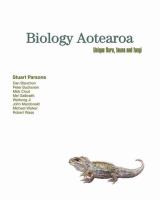 Biology Aotearoa : unique flora, fauna and fungi “As a large, isolated and relatively ancient landmass, New Zealand occupies a unique place in the biological world, with distinctive terrestrial biota and a high proportion of primitive endemic forms. Biology Aotearoa covers the origins, evolution and conservation of the New Zealand flora, fauna and fungi. Each chapter is written by specialists in the field, often working from different perspectives to build up a comprehensive picture. Topics include: the geological history of our land origins, and evolution of our plants, animals and fungi current status of rare and threatened species past, present and future management of native species the effect of human immigration on the native biota. Colour diagrams and photographs are used throughout the text. This book is suitable for all students of biology or ecology who wish to know about the unique nature of Aotearoa New Zealand and its context in the biological world.” (Catalogue)
Biology Aotearoa : unique flora, fauna and fungi “As a large, isolated and relatively ancient landmass, New Zealand occupies a unique place in the biological world, with distinctive terrestrial biota and a high proportion of primitive endemic forms. Biology Aotearoa covers the origins, evolution and conservation of the New Zealand flora, fauna and fungi. Each chapter is written by specialists in the field, often working from different perspectives to build up a comprehensive picture. Topics include: the geological history of our land origins, and evolution of our plants, animals and fungi current status of rare and threatened species past, present and future management of native species the effect of human immigration on the native biota. Colour diagrams and photographs are used throughout the text. This book is suitable for all students of biology or ecology who wish to know about the unique nature of Aotearoa New Zealand and its context in the biological world.” (Catalogue)
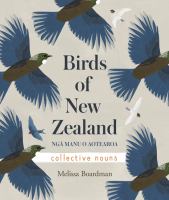 Birds of New Zealand : collective nouns = Ngā manu o Aotearoa : ngā kupuingoa tōpū / Boardman, Melissa“This “illustrated book of collective noun names for our native birds reveals something unique about their character, so we can get to know them better. It also includes information on how they live, so we can help protect them better” (Catalogue)
Birds of New Zealand : collective nouns = Ngā manu o Aotearoa : ngā kupuingoa tōpū / Boardman, Melissa“This “illustrated book of collective noun names for our native birds reveals something unique about their character, so we can get to know them better. It also includes information on how they live, so we can help protect them better” (Catalogue)
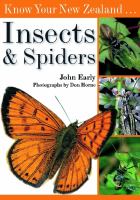 Know your New Zealand : native insects & spiders / Early, J. W.“New Zealand’s insects include some of the world’s most remarkable, such as the giant weta (one of the world’s heaviest insects, dating from dinosaur days) and the world’s longest weevil. The most iconic, important and prominent species and families feature in this title.” (Catalogue)
Know your New Zealand : native insects & spiders / Early, J. W.“New Zealand’s insects include some of the world’s most remarkable, such as the giant weta (one of the world’s heaviest insects, dating from dinosaur days) and the world’s longest weevil. The most iconic, important and prominent species and families feature in this title.” (Catalogue)
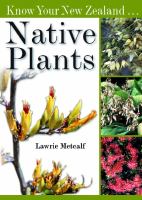 Know your New Zealand– native plants / Metcalf, L. J.“New Zealand has a unique and attractive native plant life that is of interest to everyone from gardeners and trampers to students of botany and ecology. In Know Your New Zealand Native Plants Lawrie Metcalf introduces a selection of the most interesting, iconic and important New Zealand plants, spanning latitudes from subtropical to temperate, and altitudes from sea level to alpine mountaintop, describing their natural history and distinguishing features.” (Adapted from Catalogue)
Know your New Zealand– native plants / Metcalf, L. J.“New Zealand has a unique and attractive native plant life that is of interest to everyone from gardeners and trampers to students of botany and ecology. In Know Your New Zealand Native Plants Lawrie Metcalf introduces a selection of the most interesting, iconic and important New Zealand plants, spanning latitudes from subtropical to temperate, and altitudes from sea level to alpine mountaintop, describing their natural history and distinguishing features.” (Adapted from Catalogue)
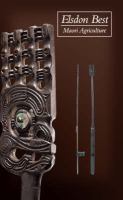 Māori agriculture : the cultivated food plants of the natives of New Zealand : with some account of native methods of agriculture, its ritual and origin myths / Best, Elsdon“Originally published: Wellington, N.Z.: Dominion Museum, 1929. Includes bibliographical references and index. The cultivated food plants of the natives of New Zealand with some account of agriculture, its ritual and origin myths.” (Catalogue)
Māori agriculture : the cultivated food plants of the natives of New Zealand : with some account of native methods of agriculture, its ritual and origin myths / Best, Elsdon“Originally published: Wellington, N.Z.: Dominion Museum, 1929. Includes bibliographical references and index. The cultivated food plants of the natives of New Zealand with some account of agriculture, its ritual and origin myths.” (Catalogue)
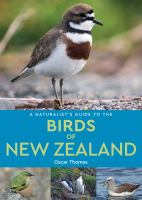 A naturalist’s guide to the birds of New Zealand / Thomas, Oscar“This photographic identification guide to 239 bird species in New Zealand, including the most commonly seen, unique and endemic species, is perfect for resident and visitor alike. High-quality photographs from one of New Zealand’s youngest nature photographers are accompanied by detailed species descriptions, which include nomenclature, size, distribution, habits and habitat. The user-friendly introduction covers climate, vegetation, biogeography and the key sites for viewing the listed species. Also included is an all-important checklist of all of the birds of New Zealand encompassing, for each species, its common and scientific name, IUCN status.” (Catalogue)
A naturalist’s guide to the birds of New Zealand / Thomas, Oscar“This photographic identification guide to 239 bird species in New Zealand, including the most commonly seen, unique and endemic species, is perfect for resident and visitor alike. High-quality photographs from one of New Zealand’s youngest nature photographers are accompanied by detailed species descriptions, which include nomenclature, size, distribution, habits and habitat. The user-friendly introduction covers climate, vegetation, biogeography and the key sites for viewing the listed species. Also included is an all-important checklist of all of the birds of New Zealand encompassing, for each species, its common and scientific name, IUCN status.” (Catalogue)
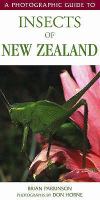 A photographic guide to insects of New Zealand / Parkinson, Brian“Brian Parkinson recognises the fact that New Zealand is a fascinating arena of study for anyone with an interest in insect life, be it casual or academic. Featuring more than 170 entries, this title will appeal to walkers, nature lovers, educationalists, and photographers wishing to identify their subjects.” (Catalogue)
A photographic guide to insects of New Zealand / Parkinson, Brian“Brian Parkinson recognises the fact that New Zealand is a fascinating arena of study for anyone with an interest in insect life, be it casual or academic. Featuring more than 170 entries, this title will appeal to walkers, nature lovers, educationalists, and photographers wishing to identify their subjects.” (Catalogue)
 A photographic guide to mushrooms and other fungi of New Zealand / Ridley, Geoffrey Stephen“This new addition to New Holland’s very popular pocket Photographic Guide series introduces readers to New Zealand’s mushrooms and fungi, which number up to some 19,000 species and include extraordinarily diverse types, from the familiar ‘mushroom’ to brackets, coral and cup fungi and slime moulds. Over a hundred species are presented here, with spectacular close-up colour photographs accompanying each entry. The ideal size for slipping into a backpack when walking through bush and forest, it will appeal to walkers, nature lovers, tour guides and educators, and fungi photographers wishing to identify their subjects.” (Catalogue)
A photographic guide to mushrooms and other fungi of New Zealand / Ridley, Geoffrey Stephen“This new addition to New Holland’s very popular pocket Photographic Guide series introduces readers to New Zealand’s mushrooms and fungi, which number up to some 19,000 species and include extraordinarily diverse types, from the familiar ‘mushroom’ to brackets, coral and cup fungi and slime moulds. Over a hundred species are presented here, with spectacular close-up colour photographs accompanying each entry. The ideal size for slipping into a backpack when walking through bush and forest, it will appeal to walkers, nature lovers, tour guides and educators, and fungi photographers wishing to identify their subjects.” (Catalogue)
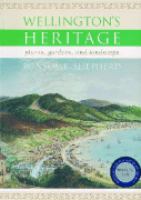 Wellington’s heritage : plants, gardens and landscape / Shepherd, Winsome“When the first European settlers arrived on the beach at Petone in 1840, the land they expected to turn into a city was heavily forested and swampy. After several months, the New Zealand Company decided to develop some flat land at the far end of the harbour, now known as Thorndon, and the settlement of Wellington had begun. Plants and seeds were the most precious things the settlers brought with them. As soon as they could, they began to clear the land and plant. In November 1841, the first Horticultural Society was formed, and after ten days it had 103 members. The Society was seen as a way of bringing settlers and local Māori together, and a means to share seeds, plants, cuttings, produce and expertise. This book tells the story of the Wellington landscape, and its private and public gardens, from colonial times to the present. It looks in detail at key plantsmen and gardeners in the nineteenth century in Wellington and the Hutt Valley, gives a history of gardens of special interest and describes the development of the Botanic Gardens and the Town Belt. Wellington’s distinctive wildflowers are also well illustrated.” (Catalogue)
Wellington’s heritage : plants, gardens and landscape / Shepherd, Winsome“When the first European settlers arrived on the beach at Petone in 1840, the land they expected to turn into a city was heavily forested and swampy. After several months, the New Zealand Company decided to develop some flat land at the far end of the harbour, now known as Thorndon, and the settlement of Wellington had begun. Plants and seeds were the most precious things the settlers brought with them. As soon as they could, they began to clear the land and plant. In November 1841, the first Horticultural Society was formed, and after ten days it had 103 members. The Society was seen as a way of bringing settlers and local Māori together, and a means to share seeds, plants, cuttings, produce and expertise. This book tells the story of the Wellington landscape, and its private and public gardens, from colonial times to the present. It looks in detail at key plantsmen and gardeners in the nineteenth century in Wellington and the Hutt Valley, gives a history of gardens of special interest and describes the development of the Botanic Gardens and the Town Belt. Wellington’s distinctive wildflowers are also well illustrated.” (Catalogue)
